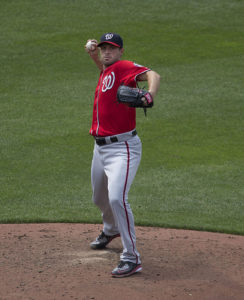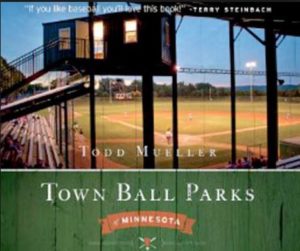 Town Ball Parks of Minnesota
Town Ball Parks of Minnesota
by Todd Mueller
BluStone Group (2016)
$32.95
Town Ball Parks of Minnesota, on the surface, is a book about Minnesota’s most unique, historic and revered amateur ball parks – 27 of them to be exact. It is, however, much more than that. It is a book about spirit – the spirit of our national pastime; the spirit of those who pick up the ball, bat and glove for the pure joy of the game; and the spirit of the Minnesota communities that support those players. It’s also, on another level, a book about author Todd Mueller’s love of the game – an affection that jumps out from the book’s lively prose and more than five hundred photographs. From Baseball Roundtable’s perspective, if you have a passion for the national pastime, this book should be on your coffee table (the book shelf is too far away).
“I love the feeling at a town ball game. It’s a bit of Americana that is slipping away. As I came to appreciate the care given to these ball parks, my goal became to reveal these venues for the true state treasures they are – and have been for generations.”
Todd Mueller, author of Town Ball Parks of Minnesota
From an interview with BBRT
If you want to write about amateur baseball, Minnesota is a good place to start. As Mueller notes in his book, Minnesota Baseball Association (MBA) officials assert that the state has more amateur (town ball) baseball teams than any other state in the country (296). That gave Mueller a large field of ball parks to work with. He narrowed that field by contacting more than 50 MBA coaches and asking each of them to rate their top five unique town ball ballparks. Then Mueller traveled – not just to the leading vote getters – but to every ball park that was mentioned even once. Two-thousand-four-hundred miles, 125-plus ballparks and more than 20,000 photographs later, Mueller had the material for the book.

Richter Field, Granite Falls – from Twon Ball Parks of Minnesota.
Given all that “prep work,” it’s no surprise Town Ball Parks of Minnesota – like a good center fielder – covers a lot of ground. In this review, I’ll share just a few examples of what you can expect as you make your way across that ground.
Mueller gives readers a look at ballparks ranging in seating capacity from 50 to 3,000 and in design from Minnesota’s first amateur park with artificial turf (Veterans Field, Minnetonka) to a ball park that has no fence line, but rather uses a pair of intersecting County Roads to mark its outfield boundaries (Martin Schmidt Memorial Park, Pearl Lake). Note: In Pearl Lake, if the ball hits the asphalt surface of the road in the air, it’s a home run. If it hits the gravel shoulder and bounces onto or over the asphalt, it’s a ground rule double. Outfielders have to have both feet off the asphalt when making a catch and, if the fielder’s momentum after the catch carries him onto the asphalt, the ball is live.
Mueller provides a schematic of each park (dimensions included), a history of the park, the team, the community’s involvement in town ball, and photos – lots of glorious photos – of the ball fields, play action, concession stands, uniform jerseys, players and fans. He even rates the restroom facilities at each park (symbolized by one-to-four plungers – although one park rates only ½ plunger) and the concessions (symbolized by one-to-four hot dogs). Only two parks rated “double fours:” Minnetonka’s Veterans Field and Jordan’s Mini Met.
Mueller takes his look at the Minnesota town ball experience one step further, exploring the communities that support these teams – sights to see, places to eat (or drink) and historic events . You can read about places like the Cannon River Winery (Cannon Falls), the Leavenworth Baseball Museum (near New Ulm), King’s Bar and Grill (Miesville), Fagen Fighters World War II Museum (Granite Falls); and much, much more. Again, with entertaining prose and plenty of photos.
There are also stories (and, of course, more photos) of some of Minnesota town ball’s most revered players and fans. There is, for example, a section on Dana Kiecker, who pitched for the town ball Fairfax Cardinals in his teen years, made it all the way to the mound for the Boston Red Sox in the 1990 American League Championship Series, and was back in town ball with the Dundas Dukes in his thirties. And, there’s the tale of Joe Driscoll, who started his town ball playing career in the late 1960’s (at the age of 16, for the Le Sueur Braves) and didn’t hang up his cleats until 45 years, a handful of teams, six state championships (he was the winning pitcher in four championship games), and more than 1,200 town ball games later. And, I hate to be repetitive, much, much more.
“In New Ulm, there’s a cliché that you’re born with a pair of spikes on your feet. When I was playing, there was an attitude in our community; we go out, we play baseball, we compete and we win. This is what we do.”
Terry Steinbach – From Town Ball Parks of Minnesota
Steinbach was a 14-season major leaguer, three-time AL All Star, 1989 World Series Champion – and former member of the New Ulm Kaiserhoff town ball team and MVP of the 1980 Class B MBA (town ball) Championship tournament.
Finally, like any good baseball book, Town Ball Parks of Minnesota includes some noteworthy trivia – like the story of perhaps the only baseball game delayed due to a fish on the field, a list of Mueller’s 15 favorite Minnesota town ball names (spoiler alert – Midway Snurdbirds is number one), and the fact baseball has been played in Delano for 119 consecutive years on the community’s Central Park site (now home to the Delano A’s).

John Burch Park, Cannon Falls – From Town Ball Parks of Minnesota.
The 235-page book ends with a special touch of nostalgia. Its final chapter provides readers a look Tink Larson Field in Waseca – where the 77-year-old grandstand was destroyed (arson) this April. Mueller decided to keep the ballpark – which he terms “truly one of the gems of Minnesota baseball” – in the book in honor of its significant place in Minnesota’s baseball heritage.
Ultimately, Town Ball Parks of Minnesota is a fitting tribute to our national pastime and “the love of the game” – no matter where you are from (but especially if you’re a Minnesotan). Baseball Roundtable recommends you add it to your baseball book collection. I am confident it will provide you, as it has me, with many hours of enjoyment. In fact, I think I may take another look at the chapter on the strangely laid out Don Giesen Field (home of the Union Hill Bull Dogs). BBRT note: Mueller reports Union Hill’s population at 66 and that its largest, and only, employer is the Union Hill Bar.
Todd Mueller
Todd Mueller, a life-long baseball fan, was a marketing and communications executive at a top twenty Minnesota corporation for more than 23 years. This is his first book. Asked about his greatest baseball memories, he replied:
My greatest memories were the entire 1987 Twins season and watching Jack Morris refuse to come out of Game 7 in ’91. I’d like to see a fraction of that tenaciousness today. On a nonprofessional note, watching my son Andrew catch for four years at Totino-Grace high school was a great joy.
Town Ball Parks of Minnesota is available online at TownBallParksofMN.com
I tweet baseball @DavidBBRT
Member: Society for American Baseball Reseach; The Baseball Reliquary; Baseball Bloggers Alliance.
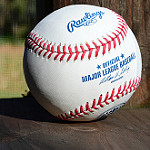

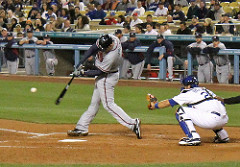
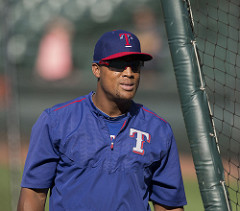
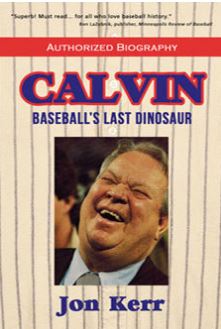
 On Monday, June 20, 2016 (7:00 p.m.-8:00 P.M.), author Jon Kerr will discuss Calvin: Baseball’s Last Dinosaur at Subtext Books, 6 West Fifth Street, downtown Saint Paul. There will be readings, Q&A, lots of great baseball talk and, of course, a book signing. If you are a fan of baseball, the Minnesota Twins, Calvin Griffith or just a history buff, this promises to be an enjoyable evening.
On Monday, June 20, 2016 (7:00 p.m.-8:00 P.M.), author Jon Kerr will discuss Calvin: Baseball’s Last Dinosaur at Subtext Books, 6 West Fifth Street, downtown Saint Paul. There will be readings, Q&A, lots of great baseball talk and, of course, a book signing. If you are a fan of baseball, the Minnesota Twins, Calvin Griffith or just a history buff, this promises to be an enjoyable evening.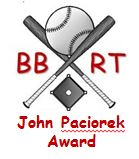 In 2014, BRT launched its own baseball award –
In 2014, BRT launched its own baseball award – 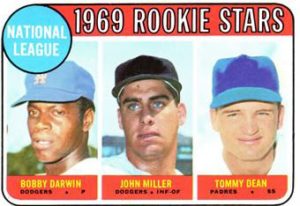
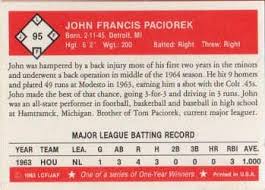 John Paciorek – signed out of Saint Ladislaus High School in Hamtramck, Michigan (where he had starred in football, basketball and baseball) – appeared in his first major league game on the final day of the 1963 season (September 29) at the age of 18. The 6’ 1”, 200-pound outfielder had spent the 1963 season with Class A Modesto Colts. The Colts’ parent club, the Houston Colt .45s (that was the current Astros’ franchise name back then), was suffering through a difficult season. The team was 65-96 going into that final game. Looking to the future, Houston had, in fact, fielded an all-rookie lineup (average age 19) on September 27. Youth was still being served two days later when John Paciorek started his first MLB game. The results were surprising – and worthy of recognition.
John Paciorek – signed out of Saint Ladislaus High School in Hamtramck, Michigan (where he had starred in football, basketball and baseball) – appeared in his first major league game on the final day of the 1963 season (September 29) at the age of 18. The 6’ 1”, 200-pound outfielder had spent the 1963 season with Class A Modesto Colts. The Colts’ parent club, the Houston Colt .45s (that was the current Astros’ franchise name back then), was suffering through a difficult season. The team was 65-96 going into that final game. Looking to the future, Houston had, in fact, fielded an all-rookie lineup (average age 19) on September 27. Youth was still being served two days later when John Paciorek started his first MLB game. The results were surprising – and worthy of recognition.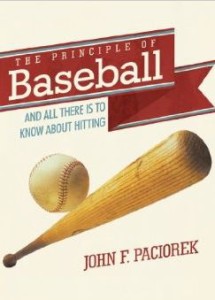 Paciorek, by the way, went on to become a high school teacher and multi-sport coach and is the author of two books (Plato and Socrates – Baseball’s Wisest Fans and The Principles of Baseball: And All There Is To Know About Hitting.) You also can enjoy Paciorek’s prose (and expertise) directly at his blog “Paciorek’s Principles of Perfect Practice” by clicking
Paciorek, by the way, went on to become a high school teacher and multi-sport coach and is the author of two books (Plato and Socrates – Baseball’s Wisest Fans and The Principles of Baseball: And All There Is To Know About Hitting.) You also can enjoy Paciorek’s prose (and expertise) directly at his blog “Paciorek’s Principles of Perfect Practice” by clicking 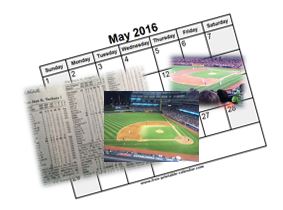 The MLB season has now moved into June, which means it’s time for BBRT’s traditional lengthy (Cut me come slack here, we are reviewing an entire month.) monthly wrap up.
The MLB season has now moved into June, which means it’s time for BBRT’s traditional lengthy (Cut me come slack here, we are reviewing an entire month.) monthly wrap up.

